#also WHY is his name michael carmichael. who was in charge of this
Photo

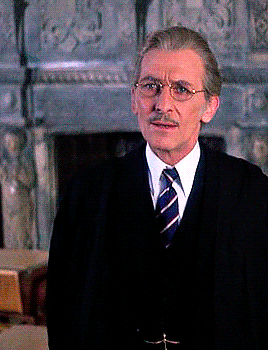




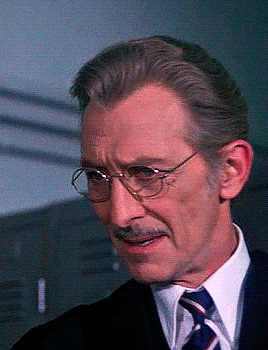

Peter Cushing in Fear in the Night (1972)
#peter cushing#horroredit#fear in the night#hammer horror#70s horror#jimmy sangster#mine#my gifs#he doesn't have lots of screentime but he still infiltrated my brain#adore his little mannerisms here which creep you out on a first watch#and after knowing the twist you look at these and your heart breaks#also WHY is his name michael carmichael. who was in charge of this#and there's a huge ass painting of him in full headmaster uniform that just hangs there#AND he's randomly married to joan collins. what is going on#good picture well done
294 notes
·
View notes
Text
Fear in the Night (1972) (AKA Dynasty of Fear and Honeymoon of Fear)
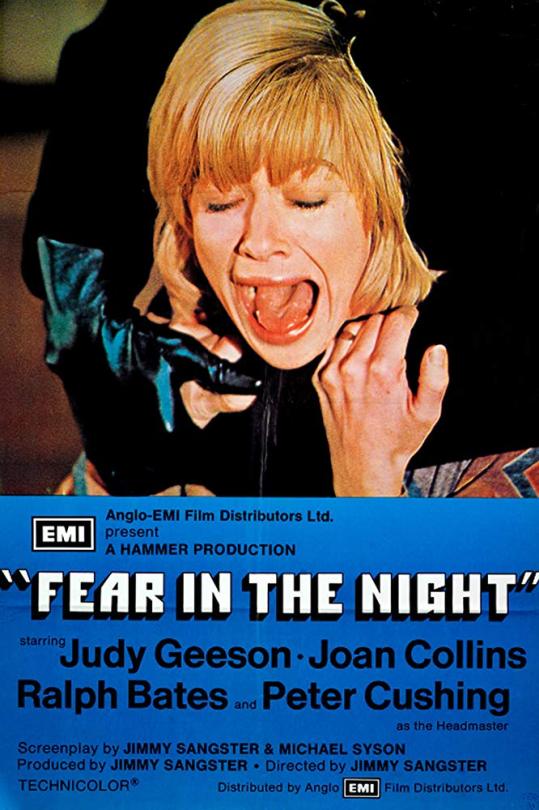
Directed by Jimmy Sangster
Screenplay by Jimmy Sangster and Michael Syson
Music by John McCabe
Country: United Kingdom
Running time: 94 minutes
CAST
Judy Geeson as Peggy Heller
Ralph Bates as Robert Heller
Joan Collins as Molly Carmichael
Peter Cushing as Michael Carmichael
James Cossins as The Doctor
Gillian Lind as Mrs. Beamish
John Bown as 1st Policeman
Brian Grellis as 2nd Policeman
(I watched Fear in The Night on a StudioCanal blu-ray. The picture was perfectly fine, but not “Holy Mother of Pearl!” amazing. But I doubt the movie has ever looked better)

Fear in The Night is a neat enough Hammer thriller (as opposed to a neat enough Hammer horror) from their 1970s Going Downhill period, as the studio tried to accommodate the tastes of a rapidly changing society while not altering very much about their product, and continuing to spend less and less with every movie. Surprisingly often ‘70s Hammer’s answer to this thorny art versus commerce conundrum would be to just stick some tits in. Thankfully Hammer doesn’t do that here, instead they opt for a twisted thriller riffing on the French suspense classic Diabolique (1955), with a subtle hint of Daphne Du Maurier’s Rebecca. But, you know, with Joan Collins and, the eternally camptastic Joan Collins aside, imbued with all the everyday glamour of the 1970s; which is to say all the glamour of the aftermath of a chip pan fire.

This penny pinching presentation of the ‘70s milieu turns out to be Fear in the Night’s secret weapon in its arsenal of entertainment. Movies like this probably looked cheap on release (fair enough, because they were cheap movies) but several decades on the financial inability to cinematically accentuate mundane reality provides a wonderful glimpse of a time mostly past. (Admittedly there remain odd pockets of the 1970s in the UK to this day, but that’s another story.) While I love watching these things for all the usual reasons, I also enjoy the no frills historical accuracy of them. (See also: Amicus and Trigon movies.) An accidental bonus of budgetary miserliness, perhaps, but a bonus nonetheless. Early on before Fear in the Night settles into its cramped arena of psychological combat there’s a particularly great bit at a motorway service station, where you can see that they once sold 12” LPs in spinner racks; on your way to see Aunty Maud, why not pick up the new Peters and Lee platter? Weird stuff, but apparently true. This is only rivalled by the man in the background when Judy and Ralph are in the car park; this unknown guy comes out of the Gents and is captured forever on film checking his fly. Cinéma doesn’t get much more vérité than a guy reflexively checking his cock’s not hanging out.
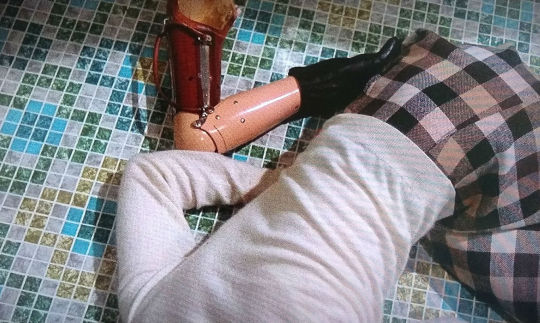
But why are Ralph Bates and Judy Geeson in a car park at a Granada motorway service station? (I just checked and there are still Granada motorway service stations; I did not know that.) It’s because Ralph and Judy are playing newlywed couple Robert and Peggy, on their way to the boys’ boarding school Robert teaches at. Their fragrant wedded bliss hit a recent road bump when Peggy was possibly attacked by a home invader with a prosthetic arm. Or possibly not; Peggy doesn’t seem the full shilling right from the start. Whatever did or didn’t happen has left Peggy in a somewhat sensitive state which imminent plot developments will do nothing to soothe and everything to aggravate. The pair move into a small house near the main school building and Peggy meets the headmaster, the confusingly named Michael Carmichael (Peter Cushing), and his wife Molly (Joan Collins). All you need to know about Molly is that she is played by 1970s Joan Collins; ergo she is a nasty piece of work under all that make-up. Michael Carmichael is a bit harder to get a grip on, partly because he is played by Peter Cushing who always finds nuances in his characters his scripts rarely deserve. He’s the best thing in Fear in the Night, but then he’s the best thing in most things that have “Peter Cushing” in the cast list. Yes, including Star Wars (1977). Actually, especially Star Wars (1977). Peter Cushing isn’t in Fear in the Night much, but he’s in it enough for him to create a character who can twitch from affable gent to spaced out creep in the blink of an eye and still leave you undecided as to whether or not to trust him. It’s called acting, darling.

Besides the ever potent screen presence of Peter Cushing, everyone else in the intentionally claustrophobically tiny cast is good value too. Joan Collins is Joan Collins, which is why they cast her, I guess. Ralph Bates has fun being too good to be true, before revealing he is in fact too good to be true. (Not really a spoiler unless you’ve never seen a movie; see further down the page.) Mostly though we chez Mundano were distracted by his appearance. Throughout Fear in the Night Ralph Bates is a kind of variable orange colour with some dusky eye shadows, courtesy of make-up according to my Life Partner; I thought he was just olive skinned and maybe had a bit of Mediterranean in the branches of his family tree. And I may have the edge since Wikipedia tells me Ralph was of French parentage and was (get this) the great-great grandson of Louis Pasteur. There’s a fun Hammer Fact for you; no charge. The core of Fear in the Night, however, is Judy Geeson, who is unrelated to Louis Pasteur as far as I know, but, luckily for audiences everywhere, successfully portrays a woman slowly coming so unstuck she can’t even trust her own senses. Hysteria simmers under the surface of each of her scenes, at least in those scenes where her hysteria isn’t stealing the scene wholesale.
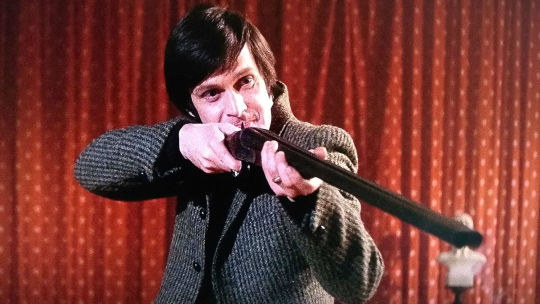
Oh yes, female hysteria is front and centre in this one. Fear in the Night has a typically balanced 1970s approach to the ladies; one’s a brassy shrew and the other is a hysterical girl-child. In case anyone wanted reassurance about how far we’ve come since 1972 gender-wise, Fear in the Night also has a lot of people telling Peggy and Molly how pretty they are, like they are delicate little dolls, and there’s not a few “Oh, those silly ladies and their silly emotions!” reactions to Peggy’s increasingly frenzied appeals for help against her apparently phantom assailant. The only reason no one seeks to blame it all on her “time of the month”, I suspect, is that the ‘70s was still struggling to come to terms with female biological functions. Part of Peggy’s problem is getting men to take her seriously; which is fair enough, as part of any woman’s problems in the 1970s was getting men to take her seriously. In the 2010s men take women seriously; but they hate them for it. But shhhh, it’s a secret.

There are a lot of secrets at play in Fear in the Night, some obvious and some surprising but can Peggy survive their unveiling? You will, naturally, have already twigged what’s going on as soon as Joan Collins turns up shotgunning rabbits and patronising Peggy to within an inch of her life. But, and this is the clever bit, Fear in the Night knows you know this. The initial reveal is so defiantly perfunctory it acts as a kind of slap in the face to your complacency, and then Fear in the Night kicks you in the kidneys with the stuff you weren’t expecting. Basically, don’t organise that ticker tape parade to celebrate your own cleverness until Fear in the Night’s credits roll. Despite Jimmy Sangster’s smart plotting relying heavily on a prosthetic arm, Fear in the Night still has room for a couple of enjoyably nifty tricks up its sleeve. If all else fails; it’s got peter Cushing in. And you can’t argue with a bit of The Cush. And that’s another Hammer Fact; no charge.
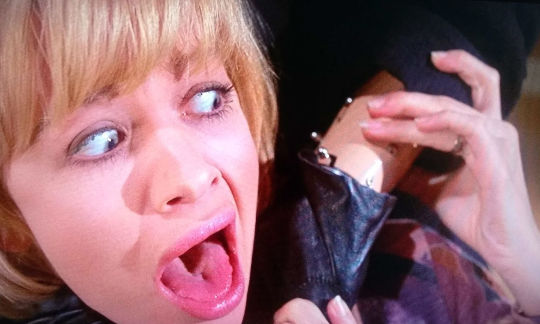
#Movies#Horror#Thriller#Hammer#Fear in the Night#Dynasty of Fear#Honeymoon of Fear#Jimmy Sangster#Judy Geeson#Ralph Bates#Joan Collins#Peter Cushing#The 1970s#1972
3 notes
·
View notes